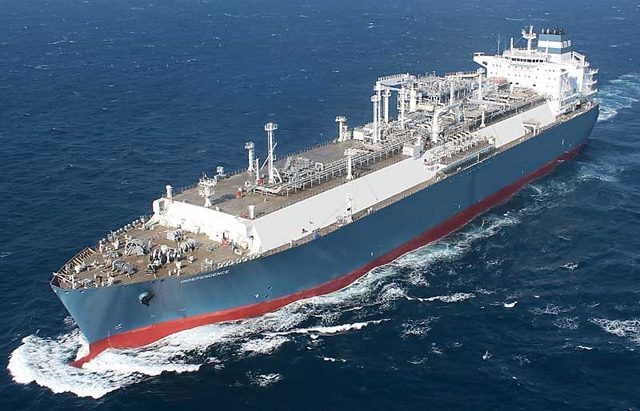FSRU Independence, image: HHI
Just a week ago, a vessel arriving to the Lithuanian port city of Klaipeda was met with a bit more fanfare than the average commercial ship – the welcoming ceremony was live broadcasted and included Lithuanian President, Dalia Grybauskaite, as well as representatives from Latvia, Estonia, Norway, the United States, Finland, Sweden and the European Council. This pomp and circumstance was a fitting greeting for the FSRU Independence, as the vessel may well be heralding a revolution in the energy security crisis being faced by Eastern European nations.
The brand new, nearly 1,000 foot long Independence is a floating liquefied natural gas (LNG) Floating Storage and Regasification (FSRU) unit launched this year by Hyundai Heavy Industries. The vessel was built for an estimated $330 million and delivered in March before reaching the Klaipeda terminal on 27 October.
The FSRU Independence has been leased for ten years from Hoegh LNG, with an option of buyout. According to Hoegh, the project scope of work includes lease and operation of a jetty moored FSRU; the Independence will be utilized as a floating facility for the Klaipeda terminal. The EBITDA contribution for the time charter is approximately $50 million per year, resulting in about $500 million for the entire 10 years. The Independence has already secured a five-year deal with Statoil for LNG shipments.
The Independence’s storage capacity is significant – at 6 million cubic feet or 170,000 m^3, it can handle almost 140 billion cubic feet a year of natural gas. This means the FSRU has the capacity to supply 100% of Lithuania’s current demand of natural gas, allowing them to forgo reliance on pipelines and unpredictable Russian supplies. To this point, Lithuania – like many of its neighbors – had relied almost exclusively on Gazprom to fulfill domestic consumption demands.
Lithuanian President Grybauskaite deemed the vessel’s arrival a “strategic geopolitical project that may decide the future of the whole region.” While it remains to be seen if the Independence will be able to fulfill such a lofty goal, the vessel will absolutely change the face of energy security for Lithuania.
More Baltic nations may follow Lithuania’s lead, turning seaward for energy supplies rather than the traditional overland gas pipelines. Poland is in the process of preparing an LNG inport terminal of its own, projected to be complete next year. If the Independence model proves successful, other Baltic nations will almost certainly follow suit.
Of course, energy prices will factor greatly into the decisions of more nations to turn to LNG. Previously, Russian gas held a monopoly as supplier of most Eastern European nations because it was the cheapest option. With the winter gas prices rising, the LNG-fueled hope for energy-security will face a tough test. Yet if the Independence can provide competitively priced energy this winter, it may demonstrate the very real chance of Lithuania moving away from the shadow of the Russian bear.

 Join The Club
Join The Club











